Persuasion, the ability to persuade. It’s a core skill that every entrepreneur should be adept in. Without it, you’ll probably find it hard to raise capital, attract clients, or even close a sale. Thankfully, becoming a master persuader is relatively straightforward. All you have to do is invest a little time and effort into learning a few basic principles, six of them to be exact. Those principles are outlined beautifully in the bible of persuasion, the book, Influence: The Psychology of Persuasion, by our guest today Dr. Robert Cialdini or Bob as he likes to be called by.
These universal principles of persuasion are as follows. Number one, reciprocity. We tend to reciprocate even if we really don’t want to. This isn’t just because of social pressure, it’s in our genes even. Hare Krishna, for example, want to give you a flower, but you’ll go out of your way to avoid them so you don’t get stuck with a flower you don’t even want and feel obligated to make a donation. But you will make that donation even though you don’t want to because of that social pressure, the law of reciprocity.
Number two, scarcity. When it’s scarce, we want it more. We see scarcity used to manipulate us with special offers that are time-limited and/or quantity-limited, and it works.
Number three, authority. If you are the undisputed guy or gal in your category, the one with the New York Times bestseller or the keynote speaker who’s invited to all the big industry events, that status conveys a halo of infallibility and awesomeness on you.
Number four, consistency. We want to be consistent with our previously formed opinions even if they’re wrong. We don’t want to look inconsistent, confused, wishy-washy, even just to ourselves, so we will double down on our stupid original bad calls.
Number five, liking. This one seems pretty obvious, but it’s insidious. We want to do business with people we like. It’s unfortunate if those people are inept, and doubly unfortunate if the person we don’t like for some unjustifiable reason is the exact right person for the job.
Number six, consensus. This is also known as social proof. There are lots of ways we could have social proof. A client list with impressive names, as seen on logos from the major TV networks and in TV shows, a who’s who of celebrity friends. It means basically that you’ve come preselected which saves me the consumer or client, a lot of time in terms of the due diligence that would normally be required. Fewer calories to burn in our big brains. Bob followed up with this seminal work with another one pre-suasion. I’ll let Bob defined pre-suasion for you, but suffice it to say, it’s powerful.
Whether you’re familiar with Bob’s work or not, you probably have come across some concepts he developed like social proof because they have become crucial tools for marketers seeking to understand human behavior. Dare I say even a cornerstone to marketing.
On this episode number 201, I’m excited to welcome Bob to my show so he can share with you some of his game-changing wisdom backed by hard science and lots of research on human psychology in marketing. If you’re looking to understand your market on a deeper and more profitable level, and then to ethically influence them to take the action is right for both them and you, this episode is not to be missed.
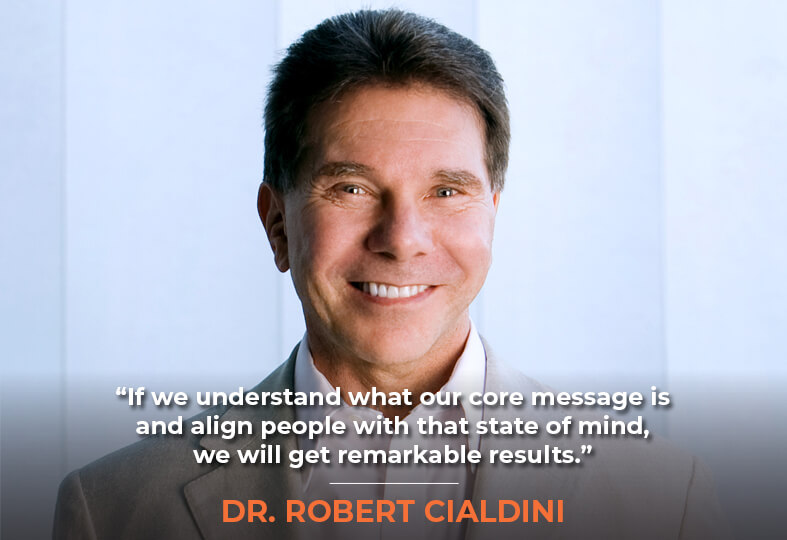
Transcript
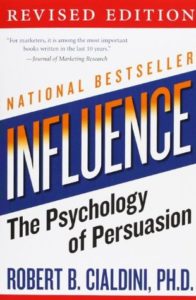
Bob, it’s so great to have you on the show.
Thank you, Stephan, I’m glad to be with you.
We got to meet at Genius Network last year at their annual event and you gave a very compelling talk. I’ve also heard you speak at Traffic and Conversion Summit where you also gave a very compelling keynote. It’s a really important message that our listener needs to understand and hear, is that there’s stuff that happens before you persuade and influence them. Hopefully, for good like we are going to talk about that.
This is a very powerful weapon, influence, and we want to use it properly. Before we delve into that, I want to understand and I want our listeners to understand, what is it that happens before we even influence them that sets the stage for successful influence?
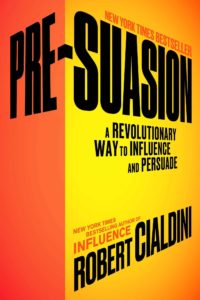
It really is about creating a mindset that is consistent with the core message that we are about to deliver. If we can put people in a frame of mind that makes them receptive to our message before they encounter it, we really get a lot of extra influence out of the bargain.
And you call this pre-suasion. You’re setting yourself up to win and can you give us some examples of this in action? It can be quite insidious or very surreptitious and we don’t even realize we’re being pre-suaded.
One of my favorite examples has to do with a study that was done by an online furniture store. One week, they sent half of their visitors to the store to a web page, a landing page that had fluffy clouds in the background. The other half of the visitors went to a landing page that had small coins, pennies in the background. Those people who first encountered is the first thing they paid attention to was clouds. They then ultimately preferred to purchase more comfortable furniture. Those who were sent to the landing page with pennies preferred to purchase less expensive furniture.


Whatever concept they were focused on, before they encountered the information about the various sofas that were available to them, changed who they were as buyers. Half of them became price-conscious buyers, half of them became comfort-conscious buyers. That’s a remarkable insight into what we can do as messengers. If we understand what our core message is and go to the moment before we send it, put people in a state of mind that aligns with that core message, we will get remarkable results.
I remember that example. You shared that at Traffic and Conversion Summit in your keynote and I was really surprised by it. How do we use this concept to help our sales and marketing without getting unethical about it?
If we understand what our core message is and align people with that state of mind, we will get remarkable results. Share on XThe key is to identify what our differentiator is, what our strength is, and what would make it wise for people to pay attention to inside our message. Then, we focus them on that concept, that idea before they encounter our message and they will have been primed for it. Have you ever painted a wall at home and you primed the wall first? If you do that, the wall grabs your paint. If you don’t do it, you don’t get the same effect.
Arranging for people to be in a particular mindset before they encounter the differentiator of our message that makes it wisest for them to focus on because causes them to pay attention to the thing that is strongest and differentiates us from everybody else. They are benefited by paying attention to that aspect of our message before they ever encounter it.
Now, is there something that our listener can do right away—next week sort of thing—to change, to optimize a website or landing page, or their copy or whatever, to better pre-suade of course, by your book? That pre-suasion book is a good next step. What else can they do that is like an immediate obvious next action?

First of all, let’s take that furniture store study. You know that commercial that asks, “What’s in your wallet”? Here’s what the results of that furniture store study tell me. We have to ask ourselves, what’s on our landing page? What’s the first thing people see when they encounter our page or our website? It should be something that puts in their mind the thing that is wisest for them to pay attention to within the rest of our message because they’re going to be focused on that in terms of their priorities at the highest level. That’s something we should really decide.
Here’s another thing, there was a study done by Royal Caribbean Cruise Lines. One holiday season, they sent half of their previous customers an email, telling them about a time-limited special discount offer if they purchased a cruise over the holiday. Half of them had a ticking clock emoji in the subject line. The other half didn’t.
Those who first saw this little icon that suggested limited time, when they then opened the email and saw that there was a limited time message, they were primed for it and they purchased 15% more cruises than the same group who saw everything the same, except what they first encountered before they ever experienced the message, limited time.
If that was going to be your core message, cue people to it first and they will be readied for it and more receptive to it when they do encounter it.
Or as a corollary to that, if you can arrange to be an environment where they’re already feeling the time crunch, maybe an auction environment or something and you have your booth there versus a more leisurely kind of trade show. Then they’re going to be more primed.
Right. Here’s another example because what you just said is a really good insight. You don’t have to create the mindset. You can go to places where that mindset already exists because of the nature of the situation. For example, if you want people to try something new, you will be better advised to send that message at the beginning of a month. People have just experienced something new, a change, and research shows they will be more receptive to messages about changing to something different at the beginning of the month than at the end.
People will wholeheartedly give back to you because you have given to them first. Share on XNow, here’s something even more handy for us to know that applies to the beginning of the week as well. Where there is an existing mindset of change, of something new, we can insert our messages for change then and we will get a boost in the effectiveness. Now, that doesn’t mean sending any message at the beginning of the week. If you send a message about staying loyal to our company, or staying the course, or living up to a commitment that you’ve made, that’s not going to work at the beginning. That’s not about change. It’s only when projecting some new idea, new product, or new model that we have in mind, asking them to change from something they’re doing now with a competitor to something that we have to offer, then beginning of the month or week will work better.
That’s great and in retrospect, it makes total sense because we all clamor to get our new year’s resolution-focused email campaigns, blog posts, and landing pages all set up in time for the new year. I don’t see people do that very often for the new month.
Do you know what we never do? Is to send those kinds of messages at particular ends of periods of time, like at a birthday, at an anniversary. People are more likely to move to something new. I know on LinkedIn, I get messages congratulating people on their 15th anniversary in such and such a company, that sort of thing. If we know that, strike. That person is readied for change because it’s the end of something and something new is on the horizon.
That’s compatible with the concept of striking when the iron is hot in terms of let’s say, you want to get a customer client testimonial, do it at a high point when they’re very excited and grateful, not when you’re doing your redesign, and that’s when you need all the testimonials, and everything has gone cold by then.

That’s right. I often say something similar with regard to one of the six universal principles of influence I talk about and that is reciprocation. After somebody has said, “Thank you for what you have done,” that is a moment of persuasive power. People are ready to give back to you because you have given to them. That’s the time to say, “Well, we were glad to help out. Is there something else we could do to show you the same level of competence and conscientiousness within your business, or perhaps with partners, or friends that you have who could also use that level of competence and conscientiousness?” Right then, don’t wait, just as you said. The iron is hot right there.
Don’t ever say, “Oh, don’t think anything of it. No big deal. Would have done it for anybody.” Don’t dismiss that moment. You earned that moment. Say something like, “How else could we help you?” or say, “You know? I know if the situation were ever reversed, you’d do the same for me.” You put them on record that this is what partners do for one another. Now you’ve arranged pre-suasively for that person to be ready to help you when you need it.
From business karma or even maybe a spiritual perspective, it’s disrespectful or disregarding of their gratitude to dismiss it and just say, “Oh, don’t worry about it. Happy to do it.”
That’s right. People think, “Oh, gee. I guess my deep gratitude and my expression of thanks wasn’t appropriate after all.”
Misplaced. It reminds me of a great anecdote you shared in the book, Influence, about the used car salesmen who would send out cards for pretty much every occasion you could possibly think of once a month like Happy Saint Patrick’s Day, Happy Valentine’s Day, whatever, to every one of his past clients and he’d get so much business out of that.
Yes, it was in a man named Joe Girard who the Guinness World Records has now certified as the world’s greatest car salesman ever. What he would do is send out those cards and he would have one line on it at the front of the card. Joe Girard, I like you. That’s it, 12 times a year. Every year, like clockwork and he sent it to 13,000 people every month. That might sound like he was putting in a lot of money postage, right? He became the highest-producing car salesmen ever, by what he did first.
Amazing and it doesn’t have to be a legitimate “holiday.” It could be some weird bizarre holiday. I even know that there are some holidays that were made up by companies such as national underwear day was made up by Freshpair, and so there’s this fun run that’s done in Manhattan with a bunch of people in their underwear and they put that together. Now it’s an actual repeating holiday every year. There is also talk like a pirate day which is still a thing. That’s fun. There’s actually a website, multiple websites that list these weird bizarre holidays that could be either themed months or the week or just the day like Geek Pride Day, for example, is I know about because I used to call my other podcast the Optimized Geeks, so I was big into the geek thing.
Gaining influence is a powerful weapon. As marketers and entrepreneurs, we have to use it wisely. Share on XThat all goes back to the point that you made about arranging to send your compatible message at a time when the mind set fits that message, right?
Right. That’s great. Now, you did some room research recently that just came out with I think, right?
Yes.
What does that have to do with the pre-suasion and the six principles?
For example, we’ve done a couple of studies, but one that I really like these days is if you have something new. Let’s say you’re a startup or you have a new product or model and you can’t claim social proof for it yet, because it’s new. You don’t have the largest market share. You don’t have the highest sales. You don’t have those kinds of things. If you have a trend in that direction, that works to cause people to think that there will be in the future that kind of social proof.
For example, we did a study where we ask people to save water in their homes and we told some of them that 30% of their neighbors were consistently trying to save water in their homes. You know what that did, Stephan? It caused the recipients of that message to save less water the next month because they could do the math. They knew that 70% of their neighbors were not saving water. Social proof was on the side of doing nothing.
If we said to them instead, “Two years ago, 20% of your neighbors saved water. Last year it was 25%. This year it’s 30%.” It’s the same 30%. Those people now save more the next month, because they could see the trend. If you have a startup or something new, don’t talk about the existing amount of market share or sales. Talk about the trend in your direction and you’ll get leverage, you’ll get traction.
That’s a great example with the conservation of water. There’s a lot of destruction happening in the environment right now, global warming, climate change, and all that, and I’m curious. How could you apply the six principles or pre-suasion to help people make a much larger difference in the climate change crisis?
My research team did a study in hotel guest rooms. If you travel at all and about 70%-75% of the rooms where you stay, there’s a card asking you to reuse your towels and linens.

Right. Then the maid never abides by that. You hang up the towels and then they put fresh towels in anyways, I guess.
That’s a different story, but in some hotels, they’re not allowed to hang up towels that are still wet for reasons of mold and so on. Anyway, in these studies, we found that if we use the standard appeal of these hotels, do this for the environment. Do this to save the planet, do this to save resources, do this to save the earth, these kinds of appeals. We know they also want to save something else. They want to save expenses. They give us this message about saving the planet.
Well, we thought we could do better than that using one of the principles of influence what we call social proof. We put in some rooms in three different hotels a message that said, “You know what? The majority of the guests who have stayed in our hotel have reused their towels and linens at least once during their stay.” That produced a 29% increase in the number of people in those rooms who then reused their towels. Knowing what the people around them like them are doing at high levels causes them to move in that direction.
Now here’s the part of the study I like the most. In other rooms, we didn’t say on the card, “The majority of guests who stayed in our hotel…” We said, “The majority of guests who stayed in this room in the past have reused their towels and linens.” That produced a 36% increase. What’s the implication for us? It’s that we need to send people testimonials not necessarily of our biggest customers or the ones that have spoken most positively of us. It’s the ones who are most comparable to our audience. Those are the people they’re going to pay most attention to when we send those messages and we should adjust the testimonials based on comparability to the recipients or to the market that we are we are hoping to persuade.
Wow. The more laser-focused you get with their peer group and the proximity or the geolocation, that relevance signal really works to your advantage.
That’s precisely right. In region or location, community, that’s a very powerful one of comparability. If people see that, let’s say, the majority of people in their community are moving in your direction, that will be more powerful than the majority of people in the country.
Always assess the situation and the audience before sending the message. Share on XThis reminds me of some advice I got from James Schramko, who I get coaching from. I’m in his Silver Circle; a mastermind. Super smart guy. He talked about the power of the small wins type of testimony or case study. If it’s like these incredible results that you got, then the person reading that, or listening to, or watching, they don’t feel like it’s relevant to them, like it’s attainable for them. If you make it a less impressive case study, it will actually work to your benefit.
That’s right because everybody’s looking not necessarily to the biggest hitter out there. They’re looking for somebody most like them to use as a standard for estimating what’s going to happen for them.
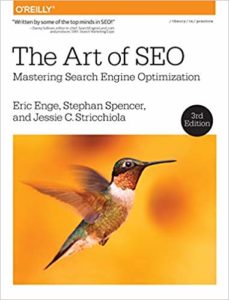
And related to this concept is you have that big SEO book. I gave you a copy, The Art of SEO, my book, which is a little overwhelming to say the least when I hand it to somebody and they’re like, “Oh, my God. I’m never going to read that. You know that, right? It’s a thousand pages.” Maybe that works a little bit against me because it’s not relevant in terms of they’re not going to read that. Maybe a 200-page book would be more enticing for them and then they would feel more of a sense of, not an obligation but something like…
Would be more welcoming and more inviting for them. That’s true on the extent to which they’re going to read the book. You’re exactly right. But a lot of people aren’t going to read a 200-page book either, but you know what that big book does? It establishes your credibility.
Right, the social does it.
“This guy knows his stuff.” That message, that level of authority that you project, then people are likely to defer to you just on the basis of that quality of mastery.
Right, so there’s an authority in that big book, there’s also social proof because it’s published by a major publisher, O’Reilly. I also get this comment back a lot of times when I give it to somebody like, “Can I just hire you?”
Yes, exactly.
“Yes, you can. I can consult.”
There was a study once where people were hooked up to brain measuring equipment and when a legitimate authority had spoken on a topic, and then these subjects had to read about the topic, the evaluation sectors of their brain flat-lined. If the authority said so, they didn’t need to jump in and think about it. They just needed to defer to that authority.
Right, so that saves them calories. They’re burning some calories in the brain. Fascinating. Speaking of related research and so forth, do you follow BJ Fogg? The reason I ask is because he named an emotion that wasn’t named before. He called it shine and it refers to that feeling of success that you have when you have mastered a new habit, or that you’ve got some mastery over, or you’ve got some competency over. Giving that a name allows you to focus on getting more of that for your consumer, your customer, your client.
Yeah, that’s right. I’m a big fan of BJ.
I’m actually presenting with him. I’m doing a workshop with him October 1st at Stanford. I’m really excited about that.
You deserve to be excited about that.
We tend to reciprocate even if we really don't want to. This isn't just because of social pressure, it's in our genes even. Share on XThank you. So what would be like the last pearl of wisdom that you’d want to share with our listeners?
It has to do with the question I frequently get, which is, “Tell me, Bob, which approach is the best one for us to apply? Which is the one that across all the various circumstances, situations, people and so on, will be the one that I should use because it’s the most powerful influence strategy?” Well, I have a colleague at the University of Georgia in the marketing department, he went on a 2½ year search to find the single most effective influence tactic. I saw him at a conference, he caught me by the elbow, he said, “Bob, I found it. The single most effective influence tactic is not to have a single influence tactic.”
That’s a fool’s game, to think that the same procedure is going to work in all situations with all sets of circumstances and all kinds of audiences, that’s just naïve. No, we have to assess the situation, the audience, the circumstances, and then send the message that is most appropriate to that group in that set of circumstances.
Right, so you use the most appropriate weapon of influence, ethically of course, and given the situation and the audience you’re talking to.
For me, that means the one that’s already there. Its engine is running. There is scarcity there or there truly is an authority there, or there really is social proof on my side. That’s the one to use. That makes it both effective and ethical.
That’s genius and in retrospect makes total sense. Thank you so much, Bob. Where can we send our listener to get more about you, watch videos, buy your books, read your blog posts or what have you?
The best place would be influenceatwork.com. They can get all that information.
Thank you so much. Thank you, Bob. Thank you, listeners. We’ll catch on the next episode.
Important Links
Connect with Dr. Robert Cialdini
Apps/Tools
Article
Business/Organization
People
Books/Mantra
Your Checklist of Actions to Take
- Utilize the Law of Reciprocity in my persuasion strategy. It means that when someone does something nice for me, I will have a deep-rooted psychological urge to do something nice in return.
- Create scarcity on my offers. Time and quantity limits create a sense of urgency which make my audience act quicker when purchasing or subscribing.
- Be an authority in my industry by becoming a renowned speaker, bestselling author, or thought leader. Achieving expert status will help me build respect and loyalty amongst my tribe.
- Stay consistent with my message and branding. Build an identity that will have a long-lasting impact on how my audience perceives me and my business.
- Develop a sense of likeability by prioritizing a strong connection with my followers. They will respond better if they relate well to my message and persona.
- Build my social proof. Aim to acquire a client list with impressive brands, as seen on logos from trustworthy media outlets, and testimonials from important and noteworthy people.
- Set a tone on my messaging to prime my audience’s mindset on what they can expect from me. Doing this will help them visualize what it is like to work with me.
- Be strategic with my timing. Timing is crucial when it comes to closing a deal so I will plan out my sales pipeline to ensure I’m not rushing my clients or leaving them hanging.
- Use the most appropriate and ethical method of influence on the given time and situation that I am presented with. There is no one strategy that works effectively every time.
- Grab a copy of Robert Cialdini’s book, Influence: The Psychology of Persuasion, and Pre-Suasion: A Revolutionary Way to Influence and Persuade.

About the Host
STEPHAN SPENCER
Since coming into his own power and having a life-changing spiritual awakening, Stephan is on a mission. He is devoted to curiosity, reason, wonder, and most importantly, a connection with God and the unseen world. He has one agenda: revealing light in everything he does. A self-proclaimed geek who went on to pioneer the world of SEO and make a name for himself in the top echelons of marketing circles, Stephan’s journey has taken him from one of career ambition to soul searching and spiritual awakening.
Stephan has created and sold businesses, gone on spiritual quests, and explored the world with Tony Robbins as a part of Tony’s “Platinum Partnership.” He went through a radical personal transformation – from an introverted outlier to a leader in business and personal development.

About the Guest
Dr. Robert Cialdini
Harvard Business Review lists Dr. Robert Cialdini’s research in “Breakthrough Ideas for Today’s Business Agenda.” He is a New York Times, Wall Street Journal, and USA Today Best-Selling author. Fortune Magazine lists Influence in their “75 Smartest Business Books.” CEO Read lists Influence in their “100 Best Business Books of All Time.”


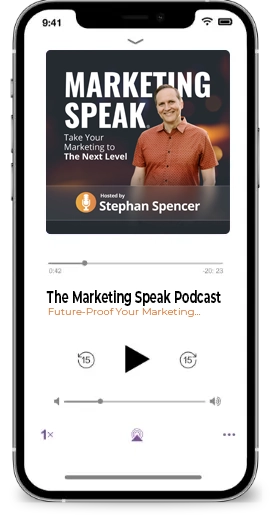





Leave a Reply